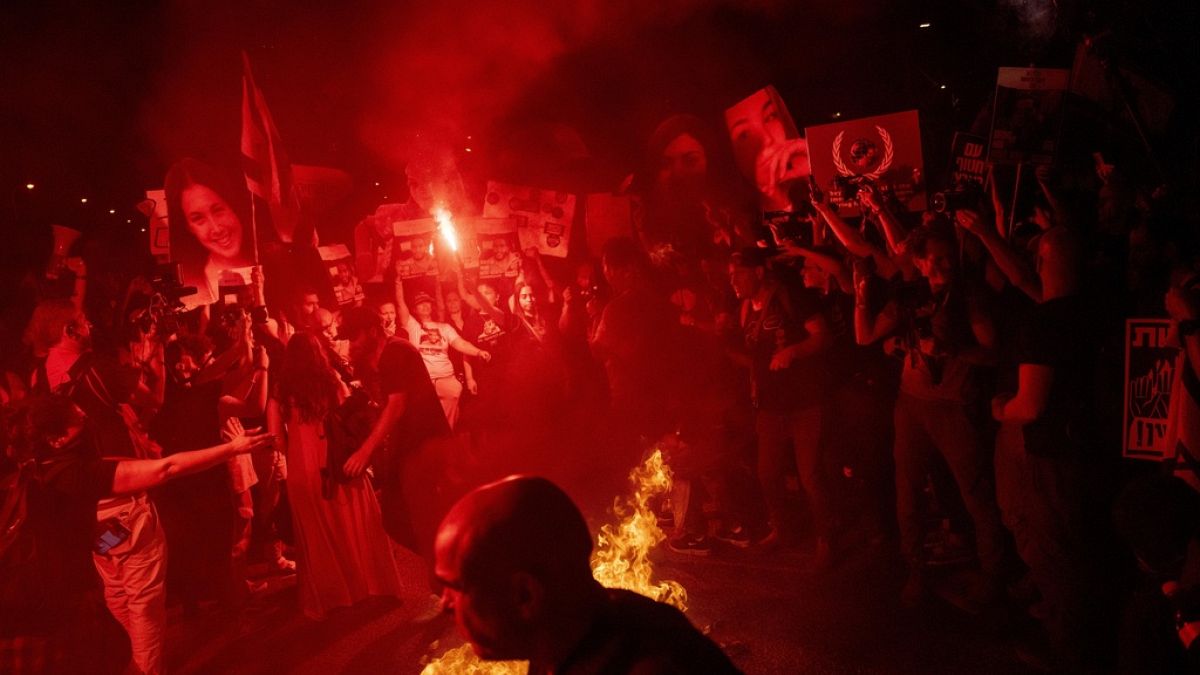In Tel Aviv, thousands of protesters gathered to demand the release of Israeli hostages held by Hamas in Gaza, as well as the resignation of Prime Minister Benjamin Netanyahu. The protesters, who have been demonstrating for months, carried photos of female soldiers abducted during a surprise attack in October. Some banners read “stop the war,” while others accused Netanyahu of prolonging the conflict for his own political gain. The tensions have been escalating as Netanyahu has rejected Hamas’s demand for a permanent ceasefire in exchange for the release of the hostages. The protesters believe the government is not doing enough to bring back the hostages either through military force or negotiating.
The situation became more complicated when the bodies of three hostages were found in Gaza earlier this week. The Israeli offensive has resulted in the deaths of over 36,000 Palestinians, including many women and children, according to Gaza’s Health Ministry. Thousands more are believed to be trapped under the rubble, with tens of thousands wounded. The recovery efforts are underway to rescue trapped individuals and provide aid to those in need. The US military vessel and part of a docking area for aid in Gaza washed up in southern Israel, near Ashdod, due to rough seas. US officials plan to deliver 150 truckloads of aid to Gaza daily, but the humanitarian crisis requires at least 600 truckloads to address the urgent needs of the people.
The protests in Tel Aviv highlighted the growing frustration with Netanyahu’s handling of the conflict and his refusal to negotiate with Hamas for the release of the hostages. The protesters, including the group Women Protest for the Return of All Hostages, called out the government for abandoning the hostages and failing to take decisive action. The ongoing protests have led to scuffles between the Israeli police and the demonstrators, with seven arrests and one reported injury. The situation remains tense as the demands for the hostages’ release and Netanyahu’s resignation continue to intensify.
Hamas has been adamant about only releasing the remaining hostages if Israel agrees to a permanent ceasefire in Gaza, a condition that Netanyahu has rejected. The families of the hostages, such as Snir Dahan, whose niece is among the hostages, are frustrated with the lack of progress in bringing back their loved ones. While Hamas released some hostages in a prisoner swap during a ceasefire in November, there are reports of others being killed in Israeli attacks. The protesters believe that the government needs to do more to secure the release of the hostages, either through diplomatic negotiations or military action, to end the suffering of the families and bring back their loved ones.
The recovery efforts for the US military vessel and the aid delivery to Gaza demonstrate the international community’s commitment to addressing the humanitarian crisis in the region. Despite the challenges posed by rough seas and logistical issues, the US officials are determined to provide aid to the people of Gaza who are in desperate need. The situation in Gaza, with thousands dead and many more injured, calls for urgent action to address the immediate needs of the affected population. The recovery efforts are ongoing to rescue trapped individuals and provide essential supplies to those affected by the conflict. The international community’s support is crucial in ensuring that aid reaches those in need and helps alleviate the suffering caused by the ongoing conflict in Gaza.










